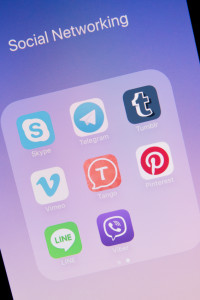Editor’s note: Margie Kupfer is president, marketing at 3Cinteractive (3C), Boca Raton, Fla.
 It’s no secret that social media can shape consumer behavior. After all, nearly half of Americans (47 percent) say Facebook has the greatest impact on purchase behavior (compared to 24 percent in 2011). And 50 percent of all Americans have a Facebook account.
It’s no secret that social media can shape consumer behavior. After all, nearly half of Americans (47 percent) say Facebook has the greatest impact on purchase behavior (compared to 24 percent in 2011). And 50 percent of all Americans have a Facebook account.
It also feels as though there are about as many stats available in talking about the rise of mobile usage when shopping for products and services. According to Adweek, 82 percent of mobile users turn to their phones inside a physical store when making purchasing decisions. This is pretty significant when you consider that there are more than 350 million Americans and the same Adweek article says roughly two thirds of Americans own at least two devices.
As mobile usage continues to grow, new social platforms will also continue to evolve and be discovered – bringing a whole new element to social marketing. In the very near future, we will see the integration of mobile and social channels through messaging apps like WhatsApp and Viber, live-streaming tools like Periscope and traditional networks like SnapChat and Facebook that have staying power.
Millennials and Gen Z ascension
At the center of this current conversation are Millennials, who might be considered the biggest disruptor to shopping patterns in our lifetime. The real disruptor, though, could very well be the next generation: Generation Z. After all, Millennials grew up with Twitter when they were in school but Generation Z has never lived a day that didn’t involve the devices, gadgets and the social/digital way of life.
This is a critical thought because today’s purchasing power demographic is quickly becoming Millennials, who are now old enough to purchase their first home and have their second child. However, the oldest among Generation Z are turning twenty, not far from getting some major purchasing power of their own.
Social mobile marketing
So why does this concern marketers and researchers? Because these are the two generations that will become a major force of shopping in a few short years. And brands that truly capture their attention will build their businesses around both mobile and social. As such, the days of social media marketing are quickly turning into social mobile marketing. In order to thrive with these audiences, brands must combine the powers of social and mobile in order to reach these two groups.
Here’s where the plot begins to thicken, because social mobile isn’t just coming into its own for these two demographics. Everyone from Boomers to Gen Y and even Gen X are all now using the combinations of mobile technology and social media. In 2015, 98 percent of Fortune-500 companies used some form of social media to engage with customers. What’s more, the number of global mobile phone users is expected to pass the five billion mark by 2019.
How mobile and social come together
There are several key ways mobile and social will continue to grow together that will help shape marketing programs for brands both large and small. Shoppers’ willingness and propensity to share a coupon or experience instantly through mobile with their friends and family members will only grow. Brands will begin to adopt more widespread ways of marketing through mobile-social users for such things as drive mobile app downloads. With the rise of local-enabled marketing, successful marketers will distribute proximity based mobile wallet objects, such as coupons or loyalty rewards, via social networks. Additionally, brands will also acquire new mobile program users through compelling offers on their social page.
Mobile will continue to be a big part of the customer experience for these social platforms, as well as a significant part of a brand’s integrated marketing strategy between the mobile and social channels.
Successful brands that continue to embrace and evolve with the confluence of mobile and social will not only capture demographics with growing purchase power, such as Millennials and Gen Z, but will also increase sales potential to other user groups as well.
